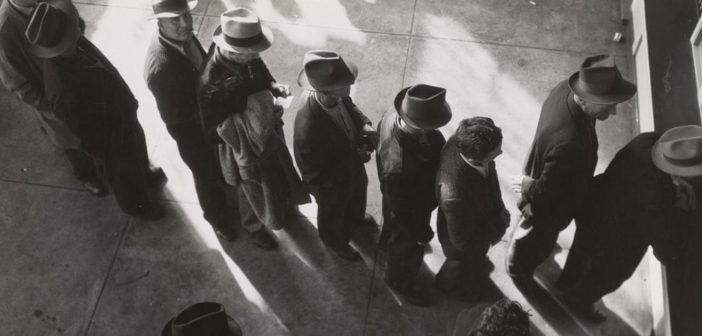We all need money every day, and there are many different ways to get it. Some people benefit from investing in cryptocurrency, while others work from 9 to 5.
All these activities feed into the economy, which is a complex and ever-changing beast. It’s affected by everything from natural disasters to international relations. One of the most important factors that affect the economy is unemployment rates, which can be measured in different ways, depending on how you define “unemployment.”
If you want to learn a little more about how this can affect the economy, read on because that’s what this article is all about.
The Different Types Of Unemployment
Unemployment is a state of being where people are without work but are (mainly) seeking it. The most common type is called cyclical unemployment. This happens when there is a decline in economic activity, resulting in businesses laying off workers, thus increasing the unemployment rate. There is also natural unemployment which occurs when workers’ supply of labor is less than firms’ demand for it, and there are frictional unemployment costs (indirect).
Structural unemployment occurs when there is a mismatch between the skills that workers have and the skills that employers need. This can be caused by technological advancement or changes in global trade patterns. ‘Frictional unemployment’ refers to the time it takes for unemployed workers to find new jobs. This can be due to geographical constraints or mismatches between the skills that the worker has and the skills they need for a new job.
The Impact Of Unemployment
Unemployment is a pressing issue in today’s society. It can have short-term and long-term effects on the economy, as well as on individuals and their families. When people are unemployed, it adversely affects tax revenue, social welfare programs, and crime rates.
It’s possible to learn more about this key area by visiting specialist websites. There’s lots of helpful free information supplied by economists and other writers, in the form of blogs and articles. If you’re researching the long-term effects of rising unemployment, it’s possible to learn why inflation is bad and read about things like underemployment and the AD-AS model of output and employment. You can also discover the link between the long-run aggregate supply and the natural rate of unemployment.
Unemployment And GDP (Gross Domestic Product)
Unemployment has a significant impact on a country’s GDP growth. It is said that every percentage point of unemployment costs the economy about 0.25% in terms of lost output.
When unemployment is high, it can be difficult for economies to grow and recover. In fact, during periods of prolonged unemployment, there can actually be a decline in an economy’s potential or maximum GDP output level. This means that even if things do start to improve down the line, economies may not reach their previous levels of productivity.
The Effect On GDP Growth
Unemployment is a waste of human resources, and it will reduce the potential output of an economy. Unemployment can affect GDP growth in many ways:
(a) reduced consumption due to unemployment
(b) lower tax revenue for governments if unemployment benefits are paid out
(c) higher social costs because unemployed workers have less money to spend on education, health care, etc., which reduces future productivity levels. In this way, high unemployment rates may lead to “hysteresis” or a situation where unemployment remains permanently high even when the economic conditions improve.
(d) higher interest rates: If employment increases from 80% back to 100%, it would be expected that inflationary pressures would build up as production resumes closer to its full capacity.
(e) less money being spent in the economy, which leads to a decline in production and an increase in unemployment. This can create a vicious cycle where unemployment causes even more harm to the economy.
Unemployment And Tax Revenue
In times where people are losing their jobs, there is less taxable income being generated by those who remain employed. There may also be a decrease in corporate profits from companies that need to downsize or close shop due to decreased demand for their goods and services.
All of these factors will lead to lower government funds coming into the country’s budget. In turn, this will result in layoffs affecting more workers at all levels (including local governments). Unemployment causes reduced funding for social welfare programs (such as unemployment benefits and social security), which can leave more people reliant on government support.
Unemployment And Crime Rates
If unemployment is high, there will be an increased criminal activity such as theft or robbery. This is because those who are unemployed may turn to illegal activities in order to survive financially and avoid poverty. Some examples of the crime include:
- armed robbery
- pickpocketing
- theft of personal items such as wallets, cellphones, or cameras
In 2008 crime rates went up in America because there were so many job losses that some people couldn’t afford basic necessities for themselves and their families. This led to an increase in crime throughout the country, including non-violent crime like shoplifting, etc.
Crime Rates And The Economy
Businesses that are in areas with high crime rates may suffer from theft or vandalism. This can cause them to close down, which will then lead to increased unemployment in that area. In addition, people may be afraid to go out and spend money in areas where crime is high, which will further impact the local economy.
If a company has its warehouse robbed, it will have to spend more money on security measures, which will increase the cost of its products. In addition, insurance premiums for businesses are likely to be higher in areas with high crime rates, as companies need to protect themselves from the financial losses caused by crime.
All in all, unemployment has a significant impact on the economy. It can lead to a decline in GDP, less taxable income, and an increase in crime rates. These factors have long-term consequences for countries with high unemployment rates. In order to break out of this cycle, strategies like stimulating economic growth must be put into place.





